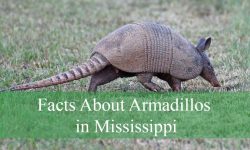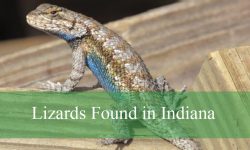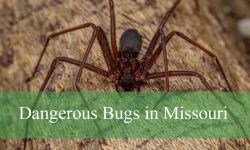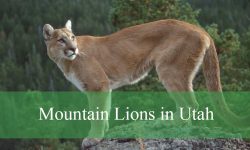The state of Oregon shelters a wide range of lizard species, stretching from hardy desert dwellers to adaptable forest skinks. Each species has unique features that make it stand out, from spiny scales and bold patterns to vibrant blue tails.
These reptiles thrive in diverse landscapes across the state, from the high desert of the southeast to the lush valleys and woodlands of the west. Some species are easy to spot basking on rocks or fence posts, while others remain secretive, hiding under logs and vegetation.
Learning to identify Oregon’s lizards not only enriches outdoor adventures but also highlights their role in the ecosystem. This guide explores 12 fascinating species with detailed identification, habitat notes, and pictures to help you recognize them in the wild.
Different Types of Lizards Found in Oregon
Northern Alligator Lizard (Elgaria coerulea)
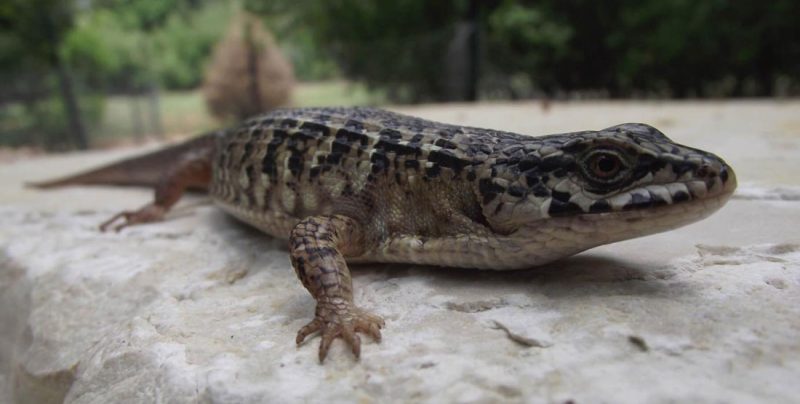
The Northern Alligator Lizard is a medium-sized reptile native to Oregon’s forests, grasslands, and mountainous slopes. It typically grows between 3 and 7 inches long, with a slender, elongated body and distinct keeled scales that give it a rough texture. Its coloration ranges from brown to olive-gray, often patterned with dark crossbands that provide camouflage against soil and leaf litter. This lizard is easily distinguished by its elongated tail, which can be more than twice the length of its body.
This species is secretive and spends much of its time hiding under logs, rocks, or dense vegetation. It is diurnal, becoming most active during warm daylight hours, although it avoids the hottest parts of the day. Northern Alligator Lizards are opportunistic feeders, preying on a wide variety of insects, spiders, and small invertebrates. Their sharp reflexes allow them to seize prey quickly, and they rely heavily on stealth rather than pursuit.
The Northern Alligator Lizard thrives in cooler, moist habitats, particularly near streams, meadows, and coniferous forests in Oregon. It is more commonly encountered in the western part of the state, where temperatures are moderate and cover is plentiful. They tolerate higher elevations and are well adapted to the damp Pacific Northwest climate. Unlike many other lizards in Oregon, this species prefers shaded environments over open, arid terrain.
Reproduction takes place in spring and early summer, with females giving live birth rather than laying eggs—a trait unusual among many reptiles. Litters usually consist of 4–8 young, born fully formed and capable of hunting shortly after birth. Northern Alligator Lizards are also known for their ability to shed their tails when threatened, a defense mechanism that distracts predators. Their resilience and adaptability make them one of Oregon’s most recognizable lizards.
Southern Alligator Lizard (Elgaria multicarinata)
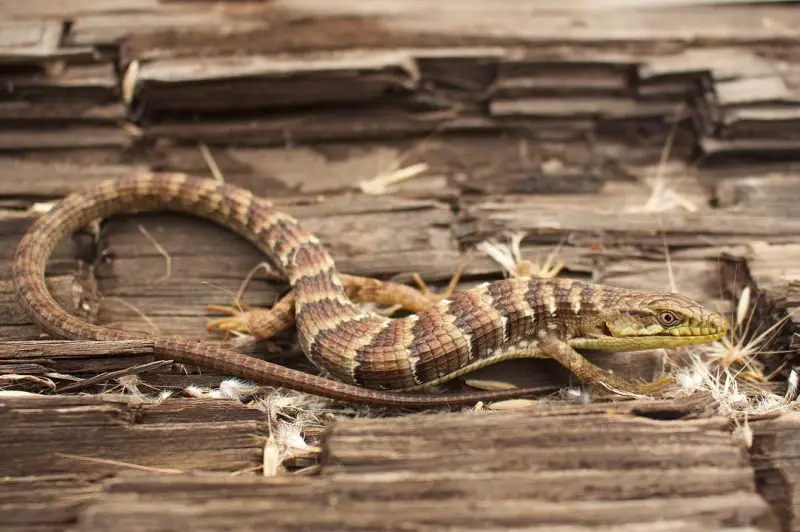
The Southern Alligator Lizard is larger than its northern cousin, often reaching up to 12 inches in total length. Its most striking features are the strongly keeled scales and the pronounced fold of skin along each side of its body, which allows for flexibility when moving through dense vegetation. Coloration varies widely, from brown and olive to gray, with bold crossbands running down the back and tail. These markings help it blend into dry grasslands and rocky outcrops.
This species is more aggressive in temperament than the Northern Alligator Lizard and will bite readily if handled. It feeds primarily on insects, spiders, snails, and small invertebrates, though it has been observed eating young rodents and other small vertebrates when available. Its powerful jaws and quick reflexes make it a skilled predator, and it often hunts in open spaces where cover is nearby.
In Oregon, Southern Alligator Lizards are restricted mainly to the southwestern regions, where the climate is warmer and drier. They prefer chaparral, oak woodlands, and grassy slopes, thriving in habitats that provide both sun for basking and cover for protection. Their adaptability allows them to live in urban edges and rural gardens, making them one of the more visible lizards in human-influenced areas.
Breeding occurs in spring, with females laying clutches of 5–20 eggs in burrows, under rocks, or in decaying logs. Hatchlings emerge in late summer or early fall, resembling miniature adults with fully formed scales. Like their northern relatives, Southern Alligator Lizards are capable of tail autotomy to escape predators. Their presence in Oregon marks the northernmost extent of their range, giving the state a unique overlap of northern and southern lizard populations.
Mojave Black-collared Lizard / Great Basin Collared Lizard (Crotaphytus bicinctores)
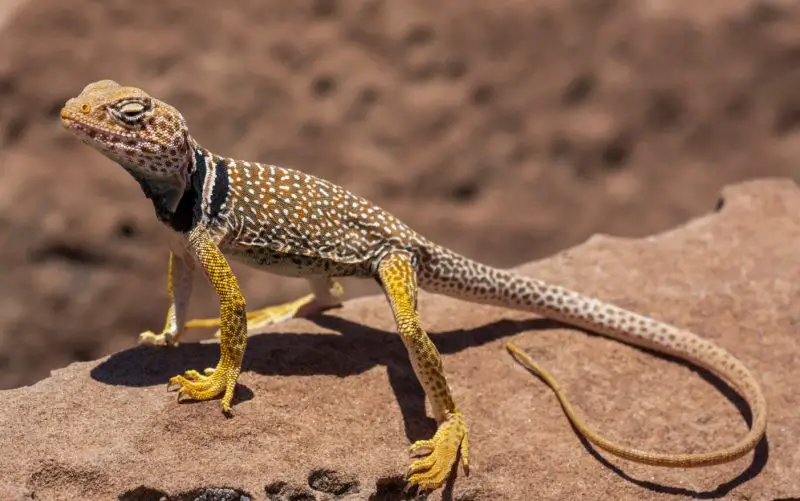
The Great Basin Collared Lizard is one of the most striking reptiles found in Oregon. It is medium to large in size, ranging from 9 to 15 inches long, with powerful limbs and a broad head. Its most distinctive feature is the pair of bold black bands around its neck, contrasting with a lighter body coloration that may include shades of tan, green, or gray. Males are often more colorful, displaying bright hues during the breeding season.
This lizard is an active predator, feeding on a wide range of insects, spiders, and occasionally small lizards. Unlike more secretive Oregon lizards, the Collared Lizard is bold and often seen basking on exposed rocks. It uses its speed and agility to chase down prey, and it is capable of running on its hind legs when sprinting—an unusual behavior that makes it stand out among North American lizards.
In Oregon, this species is found in arid desert regions, rocky outcrops, and sagebrush country in the southeastern part of the state. These habitats provide both the open spaces needed for basking and the rocky crevices used for shelter. Their preference for warm, dry environments distinguishes them from forest-dwelling species like the alligator lizards.
Reproduction occurs in late spring, with females laying eggs in sandy or loose soil. The young hatch in summer and grow rapidly during the warm season. Collared Lizards are territorial, with males defending prominent basking spots from rivals. Their combination of bold markings, athletic behavior, and desert habitat make them one of the most iconic lizards of Oregon’s high desert landscapes.
Long-nosed Leopard Lizard (Gambelia wislizenii)
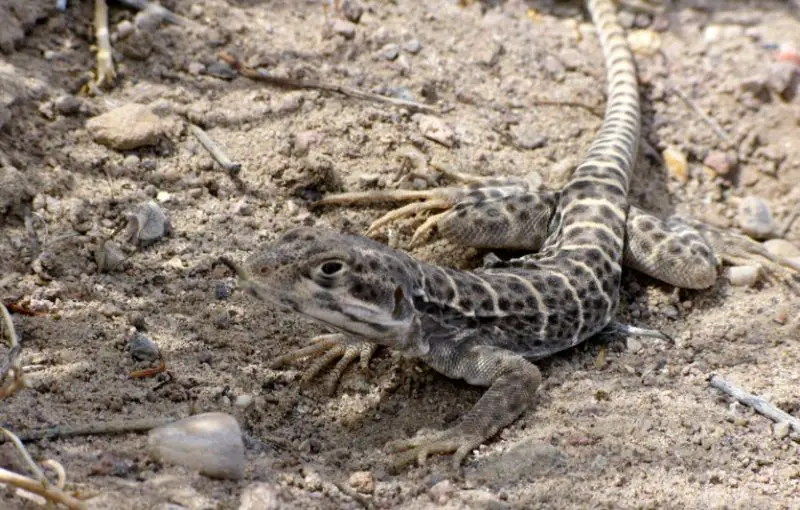
The Long-nosed Leopard Lizard is a large-bodied lizard that can grow up to 15 inches in total length, making it one of the biggest lizards in Oregon. It has a long snout, slender limbs, and a long tail, all contributing to its agile hunting abilities. Its name comes from the leopard-like spots and blotches scattered across its back, giving it excellent camouflage in sandy or rocky environments.
This species is a voracious predator, feeding on grasshoppers, beetles, crickets, and other insects. Remarkably, it also preys on smaller lizards and even young rodents, making it one of the more carnivorous lizards in the region. Its hunting strategy relies on quick bursts of speed and stealth, waiting patiently before ambushing prey.
In Oregon, Long-nosed Leopard Lizards inhabit the dry sagebrush deserts of the southeastern corner of the state. They prefer wide open spaces with sparse vegetation, where their speed gives them a distinct advantage. Because they rely on direct sunlight for warmth, they are most active during the hottest part of the day, retreating to burrows or shaded areas when temperatures become extreme.
Breeding season occurs in spring, with females laying clutches of eggs in sandy soil. The hatchlings, already patterned like adults, emerge in midsummer. During this time, females often develop vivid orange or reddish markings on their sides and throat, a seasonal signal linked to reproduction. These lizards are both visually striking and ecologically important as top insect predators in Oregon’s desert ecosystems.
Pygmy Short-horned Lizard (Phrynosoma douglasii)
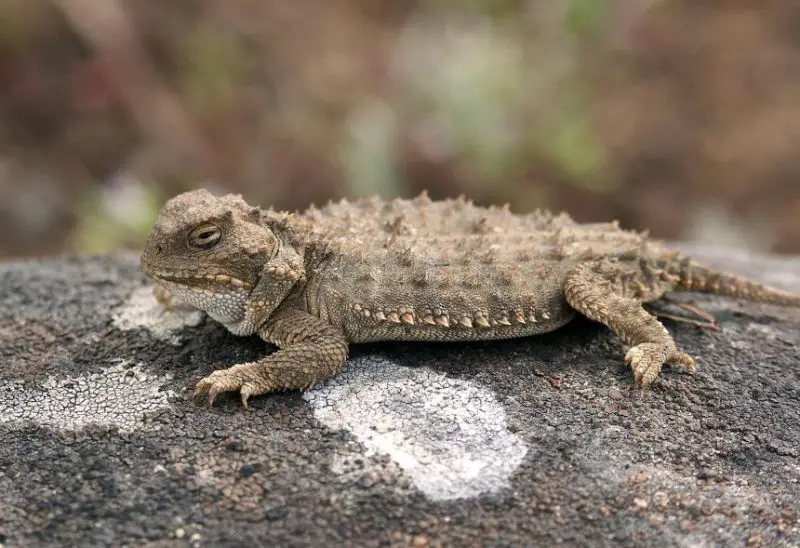
The Pygmy Short-horned Lizard is one of Oregon’s most distinctive reptiles, often called a “horned toad” because of its squat body and crown of short spines on its head. Unlike sleek-bodied lizards, this species has a rounded, flattened appearance and rough, spiny scales. Its coloration ranges from gray to reddish-brown, blending seamlessly with the desert soil and gravel where it lives. Adults are relatively small, usually only 2 to 3 inches long.
This lizard has fascinating defense mechanisms, including its ability to puff up its body to appear larger and more difficult for predators to swallow. Even more uniquely, it can squirt blood from the corners of its eyes as a deterrent against predators—a rare behavior in reptiles. Its diet consists primarily of ants, especially harvester ants, though it will consume other small insects when available.
In Oregon, the Pygmy Short-horned Lizard is found in dry, open habitats such as sagebrush flats, desert shrublands, and rocky slopes. Its cryptic coloration and motionless posture make it extremely difficult to spot. Because it relies so heavily on ants, its distribution is closely tied to areas where these insects are abundant.
Reproduction occurs in summer, with females giving live birth to litters of 3–10 young, rather than laying eggs. This adaptation allows the species to thrive in cooler high desert environments where incubation in soil would be risky. Their unique appearance, unusual defenses, and specialized diet make them one of the most fascinating lizards of Oregon’s deserts.
Desert Horned Lizard (Phrynosoma platyrhinos)
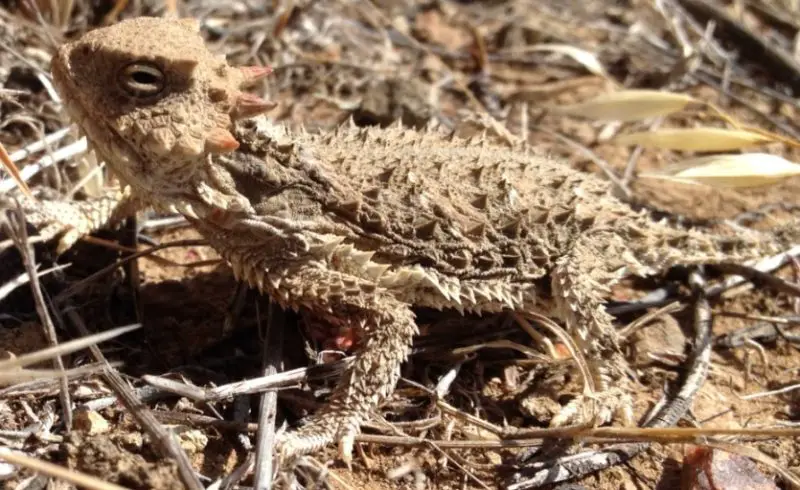
The Desert Horned Lizard is a medium-sized reptile known for its wide, flattened body and prominent horns above the eyes. Its appearance is highly distinctive, with rows of spiny scales running down its body and a coloration that matches the sandy or rocky soils of Oregon’s desert regions. Adults typically measure between 3 and 5 inches long, making them larger than the Pygmy Short-horned Lizard but similarly well-camouflaged.
This species is often observed basking quietly on open ground, blending so perfectly with its surroundings that it is nearly invisible. Its diet is dominated by ants, but it also feeds on beetles, grasshoppers, and other small arthropods. When threatened, it employs a range of defenses, including burying itself in loose sand and using its horns and spines to make swallowing difficult for predators.
In Oregon, the Desert Horned Lizard is primarily found in the southeastern deserts, thriving in sagebrush flats, sandy washes, and rocky outcroppings. These habitats provide both the heat necessary for thermoregulation and the ant colonies that sustain its diet. Because of its reliance on specific desert conditions, its range is restricted compared to more adaptable species like the Western Fence Lizard.
Reproduction occurs in the summer, with females laying clutches of 2–16 eggs in sandy soils. Hatchlings emerge in late summer or early fall, already equipped with spines and camouflage. This lizard is an icon of the desert, often mistaken for a “miniature dragon” due to its spiky appearance and rugged survival skills.
Western Skink (Plestiodon skiltonianus)
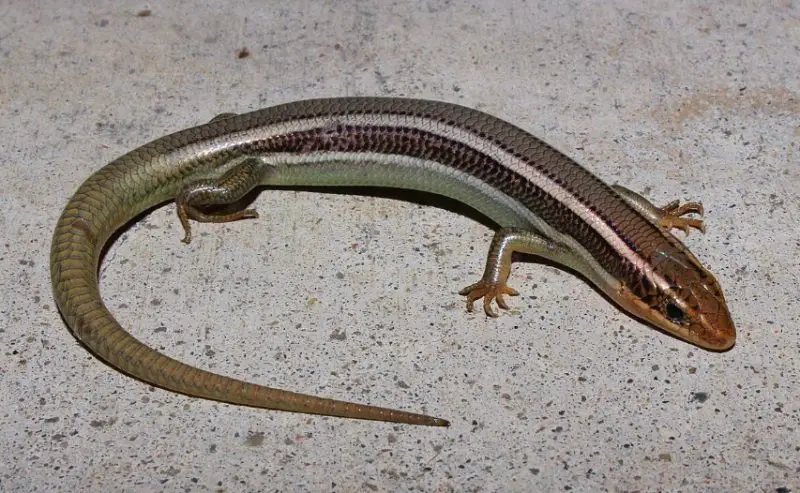
The Western Skink is a small, smooth-scaled lizard that is particularly striking in appearance. Adults are generally brown or olive, with light stripes running down the length of the body. Young skinks are especially eye-catching, with bright blue tails that fade as they mature. This colorful tail serves as a defensive adaptation, distracting predators away from the more vulnerable body.
Western Skinks are secretive and prefer spending much of their time beneath rocks, logs, and leaf litter. They are fast-moving, darting quickly to safety when disturbed. Their diet consists mainly of insects, spiders, and other small invertebrates, making them valuable contributors to controlling pest populations.
In Oregon, these skinks are widely distributed and inhabit a variety of environments, from lowland valleys to mountain slopes. They are particularly abundant in areas where soil and vegetation provide both cover and basking opportunities. Unlike desert specialists, the Western Skink thrives in mixed habitats, including grasslands, woodlands, and even suburban gardens.
Breeding occurs in late spring to early summer, with females laying small clutches of eggs in hidden, moist soil cavities. The female often remains with the clutch, guarding it until hatching, which is unusual among many reptiles. Their combination of beauty, adaptability, and secretive nature makes them one of the most interesting lizards to observe in Oregon.
Sagebrush Lizard (Sceloporus graciosus)
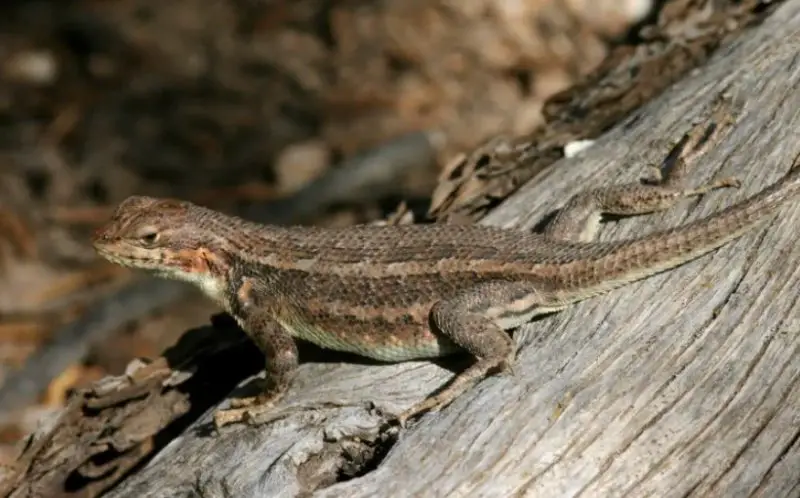
The Sagebrush Lizard is a small, spiny-scaled reptile that is well-adapted to Oregon’s arid landscapes. It typically grows between 2 and 5 inches in length and is characterized by its rough, keeled scales and subtle patterning of gray or brown. Males often develop patches of blue on their throats and bellies, which become more vibrant during the breeding season.
This species is highly active during the day, often seen basking on rocks, logs, or fence posts. It feeds primarily on insects such as beetles, ants, and grasshoppers, capturing prey with quick bursts of movement. Sagebrush Lizards rely heavily on basking to regulate their body temperature, making sunlit areas critical for their survival.
In Oregon, they are commonly found in dry sagebrush habitats, desert foothills, and rocky outcrops in the eastern and southern parts of the state. They blend exceptionally well into the soil and vegetation of these landscapes, making them difficult to detect unless they move suddenly.
Reproduction occurs in spring and summer, with females laying clutches of 2–9 eggs in loose soil. Hatchlings emerge in late summer, resembling miniature adults and capable of surviving on their own. These lizards are often considered indicators of healthy desert ecosystems due to their dependence on intact sagebrush habitats.
Western Fence Lizard (Sceloporus occidentalis)
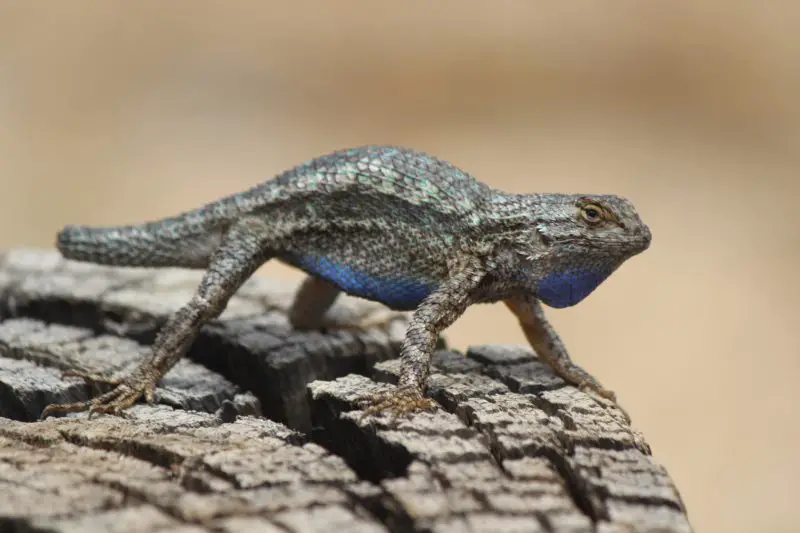
The Western Fence Lizard, also known as the “Blue-belly,” is one of Oregon’s most widespread and recognizable reptiles. Adults grow up to 8 inches long and are easily identified by their rough, spiny scales and distinctive blue patches on the sides of their bellies and throats. These bright colors are most pronounced in males, especially during territorial or courtship displays.
They are active hunters, feeding on a wide array of insects, spiders, and small invertebrates. Unlike more secretive lizards, Western Fence Lizards are often seen basking in open, sunny areas on rocks, fences, and logs. Their quick movements and habit of doing “push-ups” to display their blue patches make them particularly engaging to observe.
This species is found throughout Oregon, thriving in habitats ranging from forests and grasslands to suburban backyards. They are especially common in areas with ample basking spots and loose soil for burrows. Their tolerance of diverse environments has allowed them to become one of the most abundant lizards in the state.
Breeding occurs in spring, with females laying 3–17 eggs per clutch. Hatchlings appear in late summer and immediately begin feeding on small insects. Interestingly, the Western Fence Lizard plays a role in reducing the spread of Lyme disease by neutralizing the bacteria carried by ticks that feed on it, adding an ecological benefit beyond insect control.
Nevada Side-blotched Lizard (Uta stansburiana nevadensis)
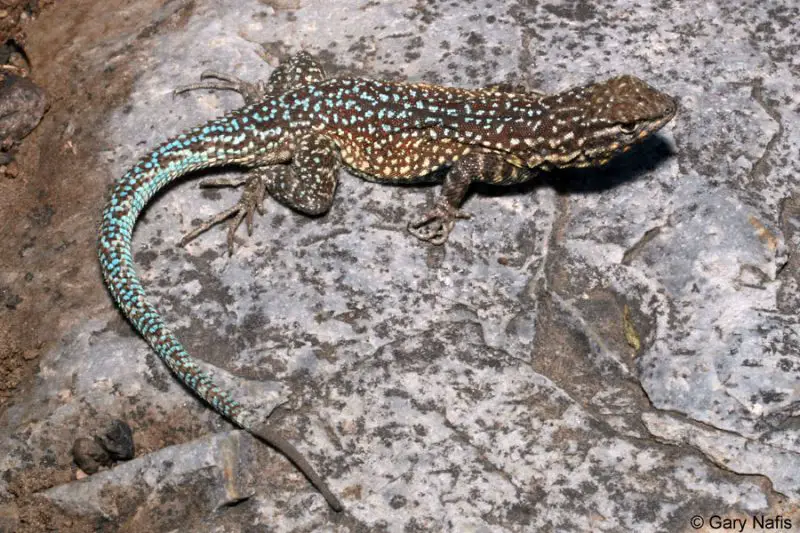
The Nevada Side-blotched Lizard is a small, slender reptile distinguished by the dark blotch just behind its front legs. Adults typically measure only 2 to 5 inches long, with a body coloration that ranges from gray to tan, often mottled with darker speckles that provide camouflage against desert soils.
This species is highly adaptable and among the most abundant desert lizards. It feeds on small insects such as ants, beetles, and flies, often darting quickly from cover to snatch prey. Its small size and quick movements make it a difficult target for predators.
In Oregon, this subspecies is found primarily in the southeastern deserts, where it thrives in open sagebrush flats and rocky areas. Its ability to survive in some of the hottest, driest parts of the state makes it a classic desert reptile.
Breeding occurs in spring and early summer, with females laying 2–6 eggs in sandy soil. Multiple clutches may be produced in a single season if conditions are favorable. Their high reproductive rate ensures strong populations even in harsh desert environments.
Northern Side-blotched Lizard (Uta stansburiana stansburiana)
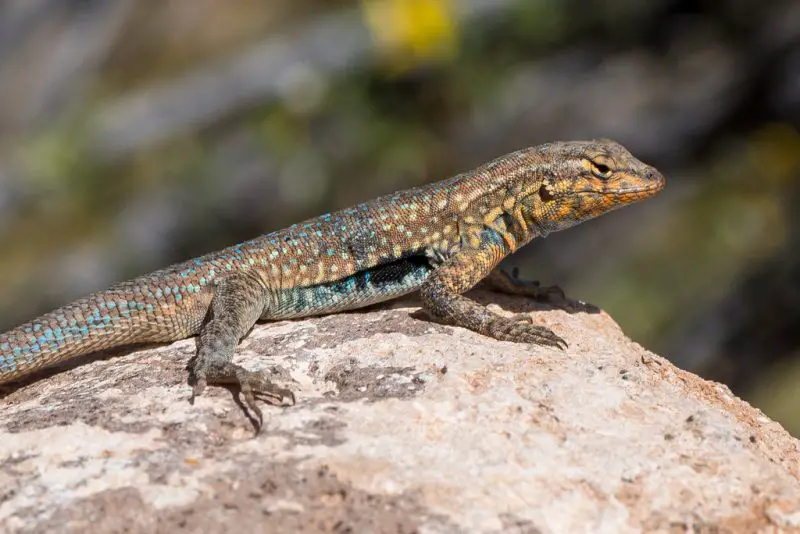
Closely related to the Nevada subspecies, the Northern Side-blotched Lizard is similarly small and slender, rarely exceeding 5 inches in length. Like its cousin, it has a characteristic dark blotch behind each front leg, though its overall coloration can vary from pale gray to brown, depending on habitat.
These lizards are opportunistic feeders, eating a wide variety of small insects and arthropods. Their quick reflexes and agility allow them to forage effectively in open areas, though they often retreat to crevices or burrows when threatened.
In Oregon, the Northern Side-blotched Lizard overlaps in range with the Nevada form, inhabiting dry, open deserts and sagebrush landscapes. Their populations are especially strong in sandy soils with sparse vegetation.
Reproduction mirrors that of the Nevada form, with females producing several small clutches of eggs during the warm season. Their adaptability, small size, and speed make them one of the most successful desert lizards in Oregon.
Plateau Striped Whiptail (Aspidoscelis velox)
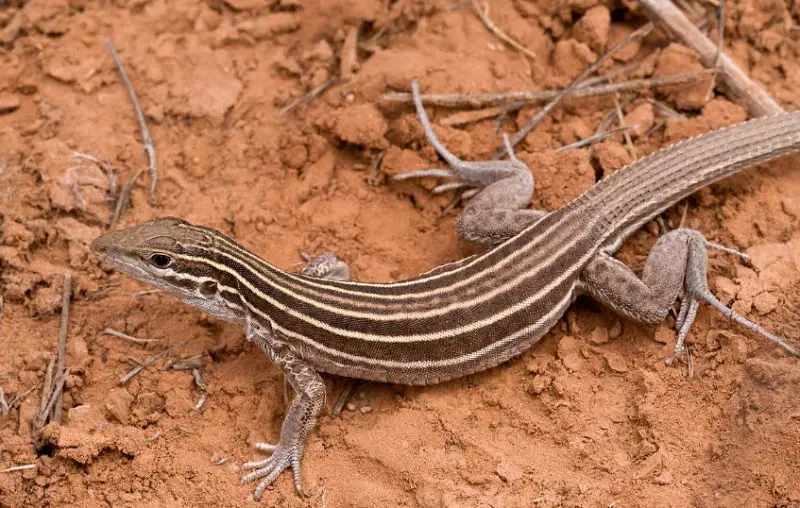
The Plateau Striped Whiptail is a slender, fast-moving lizard that can grow up to 10 inches in length, much of which is its long tail. It is easily identified by its narrow body, pointed snout, and the six to eight light stripes that run along its back against a dark brown or black background. Its sleek appearance and constant motion distinguish it from other lizards in Oregon.
This species is known for its incredible speed and agility, darting across open ground in search of food. Its diet consists mainly of ants, beetles, and other small insects, which it captures with rapid strikes. Unlike more sedentary lizards, the Whiptail is almost always on the move, rarely sitting still for long.
In Oregon, Plateau Striped Whiptails are found in the southeastern deserts, particularly in sandy washes, rocky slopes, and areas with sparse vegetation. Their long legs and streamlined bodies make them perfectly adapted to these open, hot environments where quick escape is essential.
Reproduction is particularly fascinating, as many populations of this species are parthenogenetic, meaning females can reproduce without males. Eggs hatch in summer, producing all-female offspring that continue the cycle. This unusual reproductive strategy, combined with their speed and adaptability, makes them one of Oregon’s most unique lizards.
Best Time and Places to Observe Lizards in Oregon
The best time to observe lizards in Oregon is during the warmer months, typically from late spring through early fall (May to September). Lizards are ectothermic, which means they rely on external heat sources to regulate their body temperature. They are most active during sunny mornings and late afternoons, when temperatures are warm but not excessively hot.
For locations, the southeastern deserts of Oregon are prime lizard-viewing areas, including sagebrush flats, rocky outcrops, and sandy washes where species like the Long-nosed Leopard Lizard, Side-blotched Lizards, and Plateau Striped Whiptails thrive. In contrast, if you are in western Oregon, you can find Northern Alligator Lizards and Western Fence Lizards in woodlands, meadows, and even suburban areas. Mountain slopes and grasslands also provide excellent opportunities to spot Western Skinks and Sagebrush Lizards.
By visiting open habitats with rocks, logs, or fence posts, observers increase their chances of seeing lizards basking in the sun. Early mornings after sunrise and warm afternoons are particularly rewarding, as lizards emerge from cover to regulate their body heat before foraging.
FAQs about Lizards in Oregon
What types of lizards are most common in Oregon?
The most commonly observed lizards in Oregon include the Western Fence Lizard, Northern Alligator Lizard, and Western Skink. These species are widespread and adaptable, living in diverse habitats from forests to grasslands.
Where can I see desert lizards in Oregon?
Desert-dwelling species such as the Long-nosed Leopard Lizard, Desert Horned Lizard, and Plateau Striped Whiptail are best seen in southeastern Oregon. Areas with sagebrush flats, sandy washes, and rocky hillsides offer the best opportunities for spotting them.
Are lizards in Oregon dangerous?
No, lizards in Oregon are not dangerous to humans. They are harmless reptiles that play an important ecological role by controlling insect populations. Some species can bite if handled roughly, but they pose no venomous threat.
Do lizards live in forests as well as deserts in Oregon?
Yes, Oregon’s lizards occupy a variety of habitats. While species like the Collared Lizard and Horned Lizards prefer arid desert environments, the Northern Alligator Lizard and Western Skink thrive in forested and moist habitats of western Oregon.
What is the best time of day to see lizards?
The best times are mid-morning and late afternoon, when lizards bask in the sun to warm up but avoid the extreme midday heat. Observers will often see them perched on rocks, logs, or fence posts during these hours.


